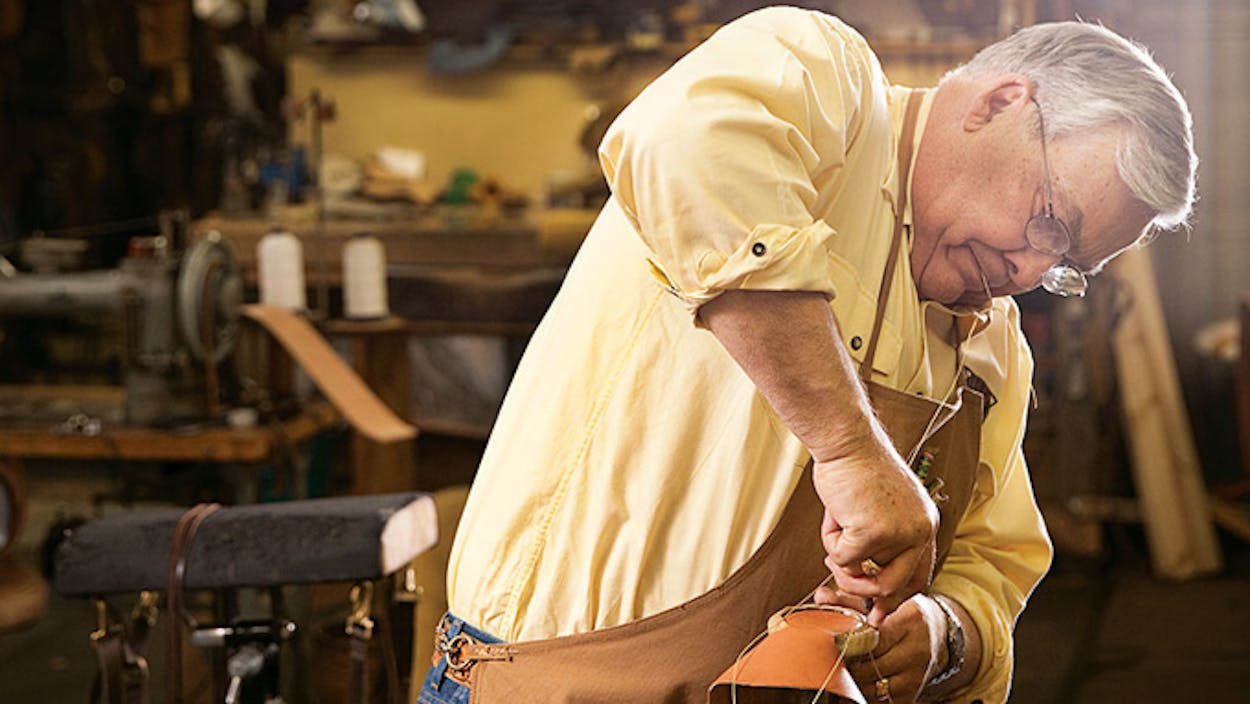Step inside the door of the Oliver Saddle Shop and the earthy smell of leather overwhelms you. That’s partly because of all the horse-riding gear on the sales floor, but it’s also because of what’s going on in the back, where chaps, reins, and, most important, the company’s namesake saddles are handcrafted by the Oliver family, as they have been for almost a hundred years. Indeed, little has changed since 1917, when Claude Oliver bought an existing saddlery in Vernon and made it his own. Just as in the old days, working cowboys come in and give their specifications, then a custom piece is created by one of seven saddle makers. These saddles, however, are more than mere equipment; known for their ornately tooled designs, they’re heirloom-quality works of art. Today, Claude’s grandson, 65-year-old Richard, runs the shop alongside his two sons, Bryan and Zeb. Richard hopes it remains in the family for generations to come, but more than that he hopes those future generations inherit the honesty and integrity that the company is based on. “It’s what I want them to take away from this no matter what business they end up going into,” he says. “It’s what my family stands for.”
Q&A with Richard Oliver
How long did it take you to learn how to make a saddle?
I grew up in it, so I learned pieces at a time. But I think it takes about five years to teach someone how to make a good saddle. We’re not an assembly plant.
Did you want to be in the family business?
I got a business degree from West Texas A&M, in Canyon, so I could’ve gone on to something else, but I wanted to stay in the shop and help my mom and dad run it.
What’s the most important part of making a saddle?
You have to know what kind of riding someone’s doing. Cowboys are still our main customer, and they need a heavy-duty style that’s safe and comfortable, because they’re sitting in it for ten hours a day. Then you get into the roping-style saddle for arena ropers, which doesn’t have as deep a seat and is only sat in for a little while. And then the cutting world is different from the roping world.
Can you school me in the parts of the saddle?
First, there’s the tree—the wood framework of the saddle—and it’s covered in rawhide. We design the leather that goes on top of that. There’s the seat, and it’s the main measurement we take. There’s the swell fork and the horn at the front of the saddle and the cantle at the back. The fenders hang down, and that’s where your stirrups are. The tie straps, or latigos, go under the front of the horse. They hook onto the cinch, which holds the saddle on the horse. Then you have the flank billets, which hang from the
back of the saddle and hook to the belly band.
How long does it take to make all of that?
Normally it takes about a week. A tooled saddle takes about three to five days longer, like if someone wants an eagle or an elk on it. When we made President [George W.] Bush’s saddle, we put the presidential seal on it.
But it takes longer for the customer to get it, right?
Yes, the waiting list is around ten months. God has blessed us. When I came out of college, we were about a year behind, and we’ve not caught up.
How old are your boys?
Bryan is a ’74 model, so he’s 39, and Zeb is a ’77 model, so he’s 36. They have more than ninety years of experience put into them, and they carry that on. Things change and we continually have to innovate, but both of them are very good artists.
For more information, go to oliversaddle.com.








